Following a short unwanted international break, the Premier League gets back underway on Saturday afternoon at Goodison Park as Everton face off against champions Liverpool. Following an excellent start to the season, it’s Everton who sit top of the table at the time of writing this, with only them and Aston Villa boasting perfect records. Speaking of Aston Villa, it was them who upset Liverpool’s otherwise perfect record by defeating them 7-2 in a random, atypical game of football. Liverpool then will be looking to get back on track with a win against the league leaders, while for Everton, a win against their rivals would only increase the noise coming out of the blue side of Merseyside at the moment. This matchup doesn’t just offer Liverpool vs Everton, but also Klopp vs Ancelotti, and this is always an interesting match up in styles. In this tactical analysis then, I will preview the tactics expected in the game, ranging from Ancelotti and Everton’s build-up structures against Liverpool’s pressing, as well as looking at how Everton may look to set up defensively to combat Liverpool’s positional play.
Building past Liverpool
Liverpool’s press is notoriously one of the hardest to build past in world football, with Liverpool’s focus on forcing the opposition into central areas allowing them to manage and nullify overloads in midfield as well as create opportunities for ‘high quality’ recoveries. As a result of this, if Everton are to be successful it it likely they will have to find a way to aid ball progression through this press, and thankfully their manager has a track record of setting up sides to do just this.
The most common way teams look to find space against Liverpool’s press is through the use of a double pivot, and it is something both Carlo Ancelotti and Pep Guardiola have used successfully at times. As you hopefully know if you have been reading tactical writing for long enough, Liverpool press in a 4-3-3 with the two inside forwards pressing the centre backs on a diagonal, while striker Roberto Firmino cuts access to the pivot with his cover shadow. The central lanes are therefore left open while the wide lanes are cut, and so Liverpool’s central midfielders play a vital role in pressing central players from behind in order to prevent ball progression.
This scene against Manchester City is a good example of Liverpool’s midfield press. We see the same pressing system again, with Mané initially cutting the passing lane wide while Firmino cuts the lane into the pivot. Again then, City are encouraged to play through the two forwards, leaving the midfield to press from behind. Here, Milner could perhaps be a little narrower to press the player, but he instead looks to prioritise the pass out to the wing. Henderson then jumps to press the receiving Bernardo, however, because he is pressing from the blind side, he is able to arc his run without Bernardo seeing, and so he moves slightly towards Fernandinho.

Henderson is then able to apply pressure to Fernandino well, and City are forced back to the other centre back, which effectively resets Liverpool’s press and they can go again. Wijnaldum is across to cover the latest dropping midfielder, and Salah can start his run to press the centre back while keeping the full-back in his cover shadow.

The main ‘weak point’ in this press then is Roberto Firmino’s role, as his role can often involve the most difficulty in terms of keeping a pivot in his cover shadow and preventing them from receiving. As a result, teams such as Ancelotti’s Napoli looked to create a double pivot around Firmino. This further increases the difficulty of Firmino’s role, as keeping two players on opposite sides of you covered just isn’t possible through one player.
As a result, this tactic often then relies on that midfield pressing by Liverpool, as Firmino needs a midfielder to cover one of the pivots while he covers the other. This in turn gives the opposition more opportunities to explore, as they can look to overload or use the space created by a pressing midfielder.
We can see a theoretical example below of a potential overload that can be created through the use of a double pivot, where the narrow positioning of a pivot can be used to create passing lane into the wide area or even the half-space depending on the area of the pitch.
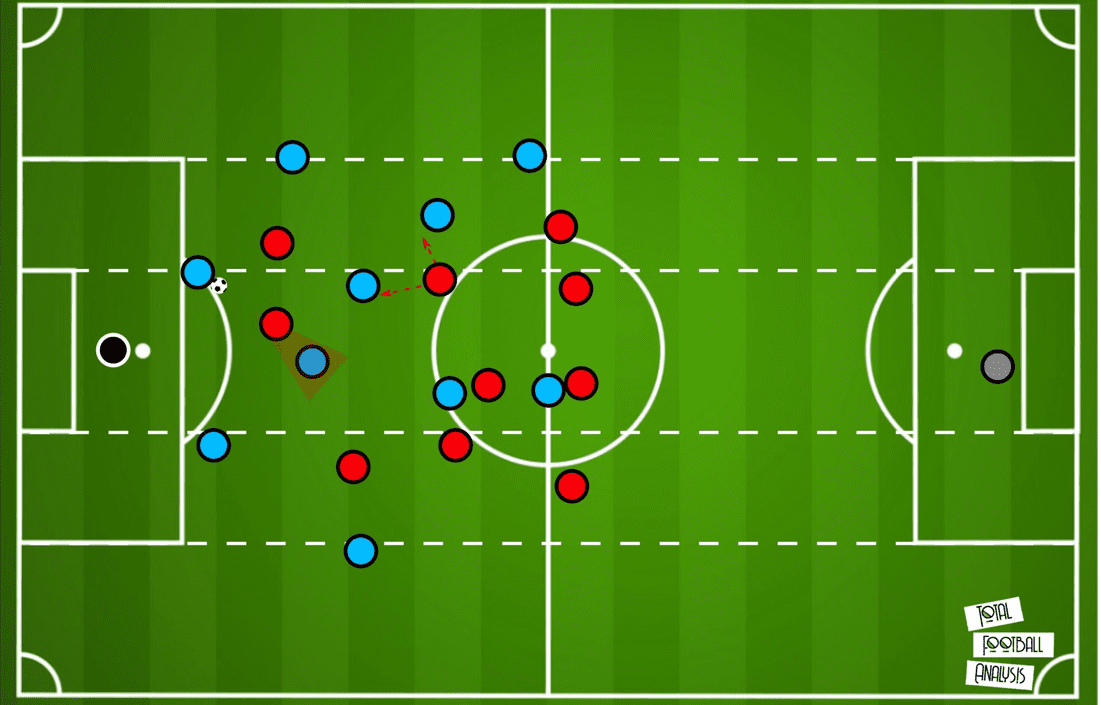
We can see an example in a wide area here where Kalidou Koulibaly is able to pick out an excellent pass into a wide area for Lorenzo Insigne to drop onto. We can see Jordan Henderson covers the ball near pivot, who positions himself slightly narrower in able to create this passing lane.
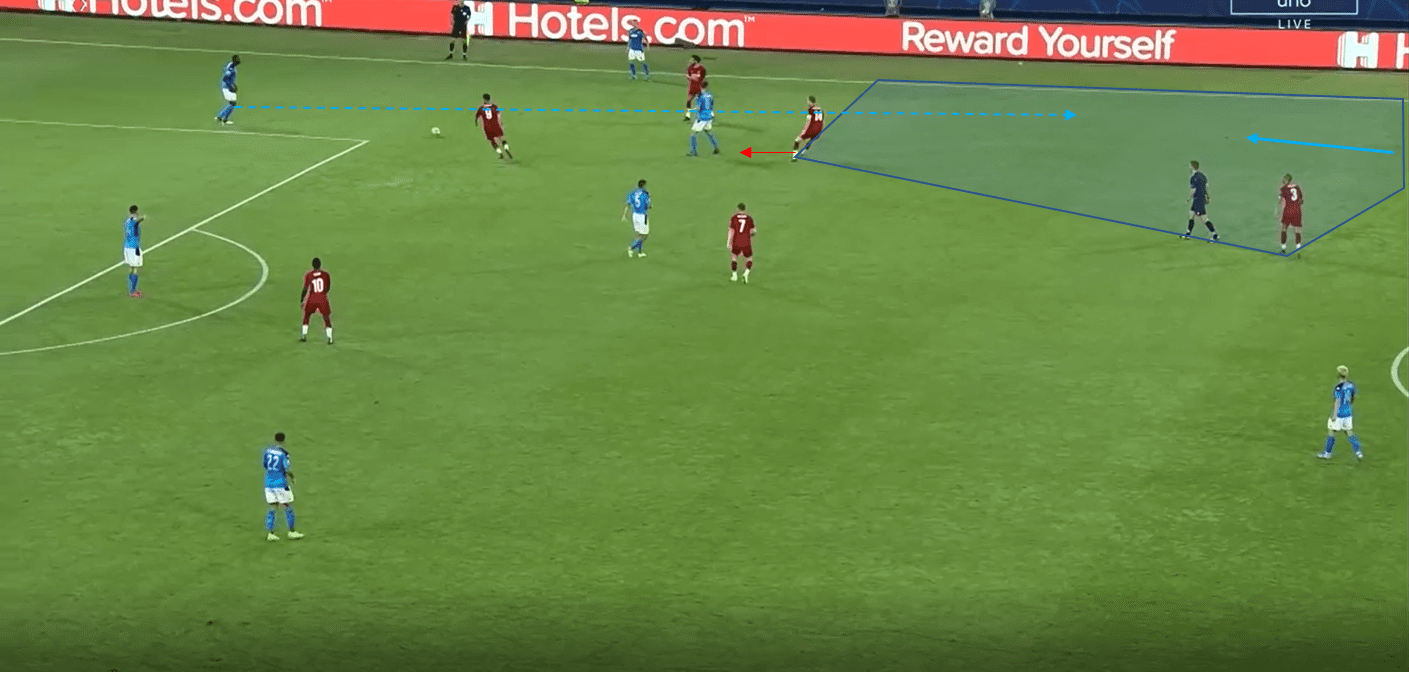
Once the ball is progressed here, Liverpool have to commit a full-back high to maintain pressure on the ball, and due to the threat of playing forward, Liverpool’s midfield naturally drops deeper to cut lanes such as the one Milner frantically looks to cover here. As a result, those deeper pivots are given much more space and time on the ball, and so that suffocating Liverpool press is not broken, but its grip is loosened.
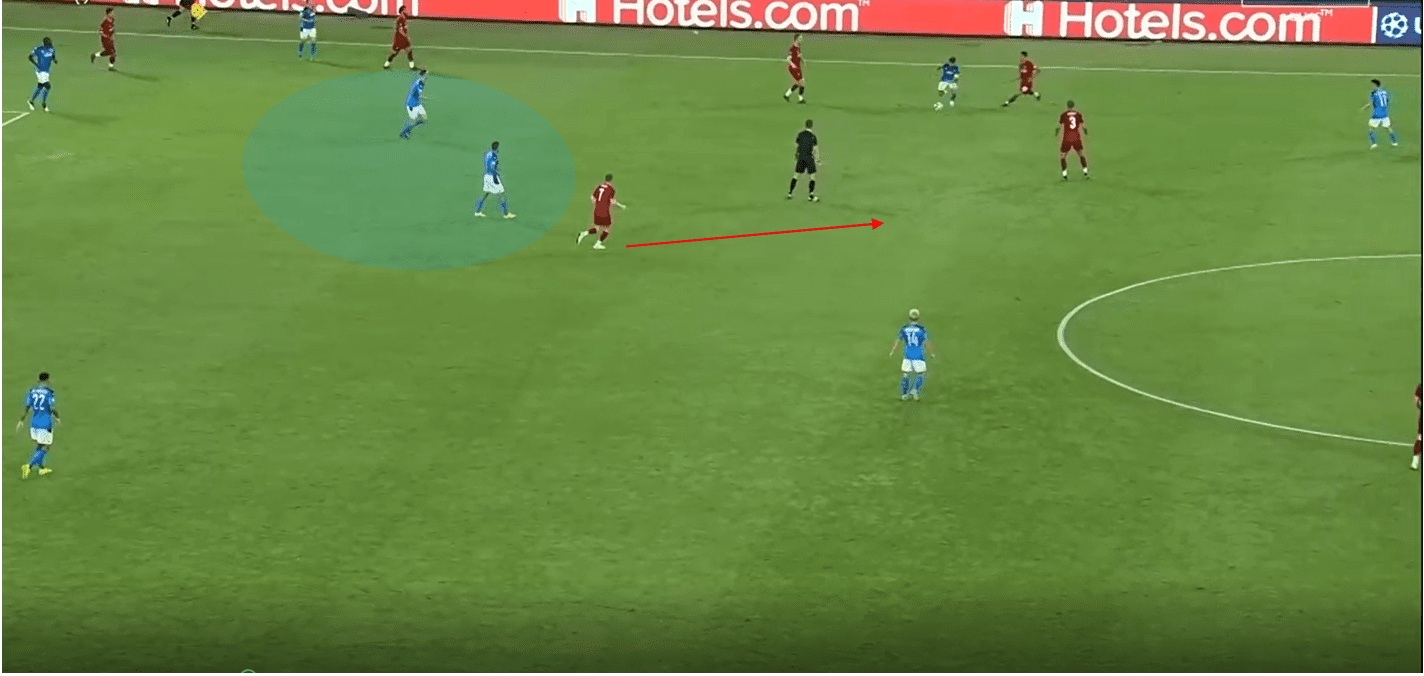
We can see another example of an overload being created here, with James Milner stepping up to cover the ball near pivot who Firmino can’t cover. Insigne here now drops behind Milner, looking to receive the ball in space due to Milner’s attention being towards that pivot. This kind of 4-2-2-2 formation was used well by Guardiola and Manchester City in their 4-0 win over Liverpool post lockdown
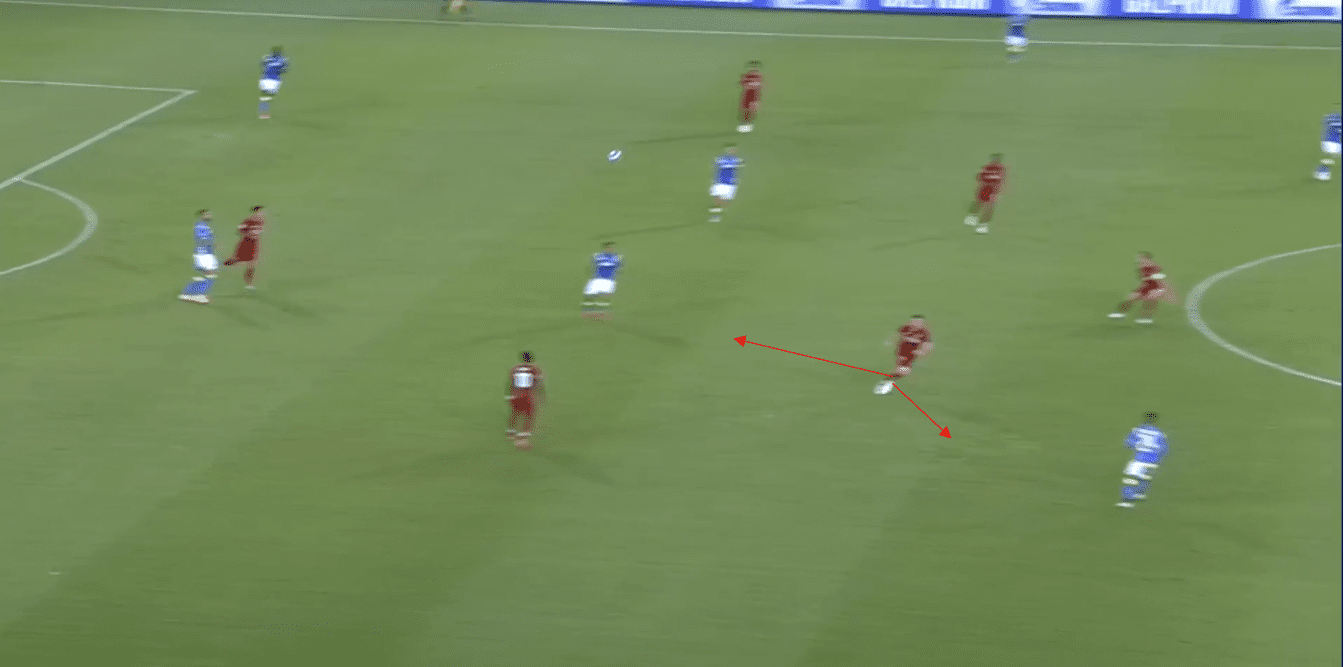
The key for the dropping double pivot is to affect the pressing runs and responsibilities of the Liverpool midfield three, and this is done through optimal positioning. Maintaining very central positioning can cause problems for Liverpool, as it makes it difficult to decide which player should go towards the near pivot. Each of the two pressing options has an advantage and disadvantage, as in this example below, if the central midfielder of the three presses they reduce the central cover on the back four.
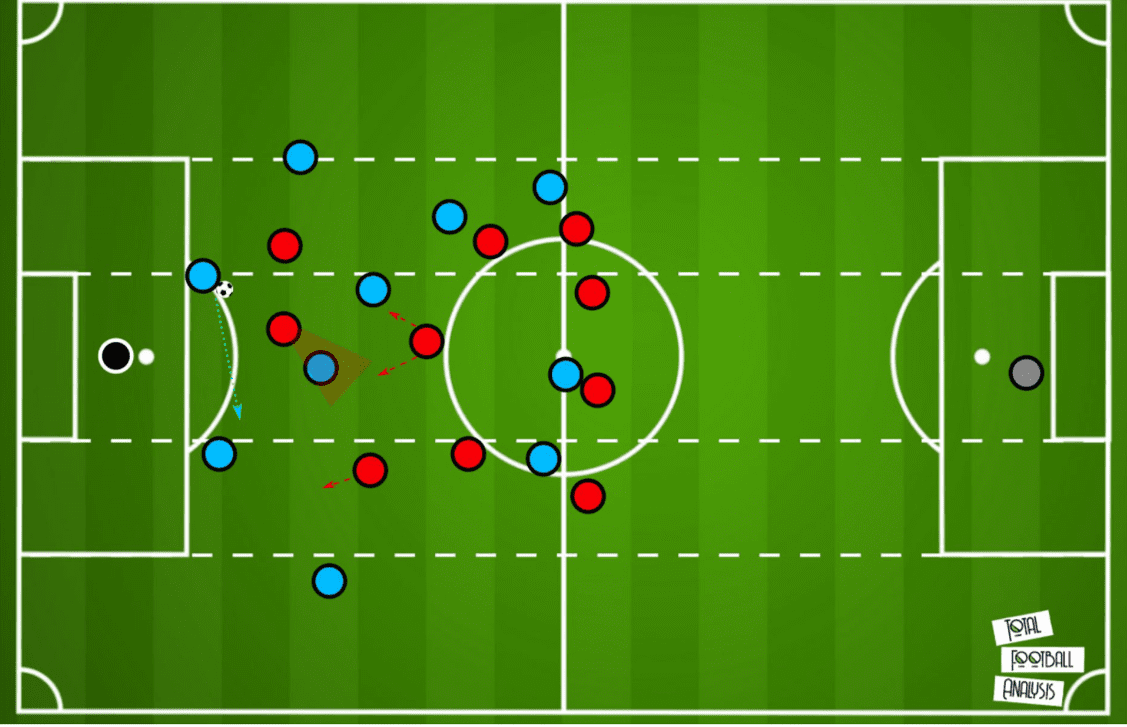
We can see an example back from the 0-0 draw between the two teams last season, where Everton used a double pivot in a 4-4-2. Firmino cuts the lane to the far pivot while Fabinho moves high and presses the ball near pivot. Liverpool therefore have more coverage of the wide passing lanes, but the space in front reduces. Liverpool’s high line is very useful in situations like this to increase vertical compactness.
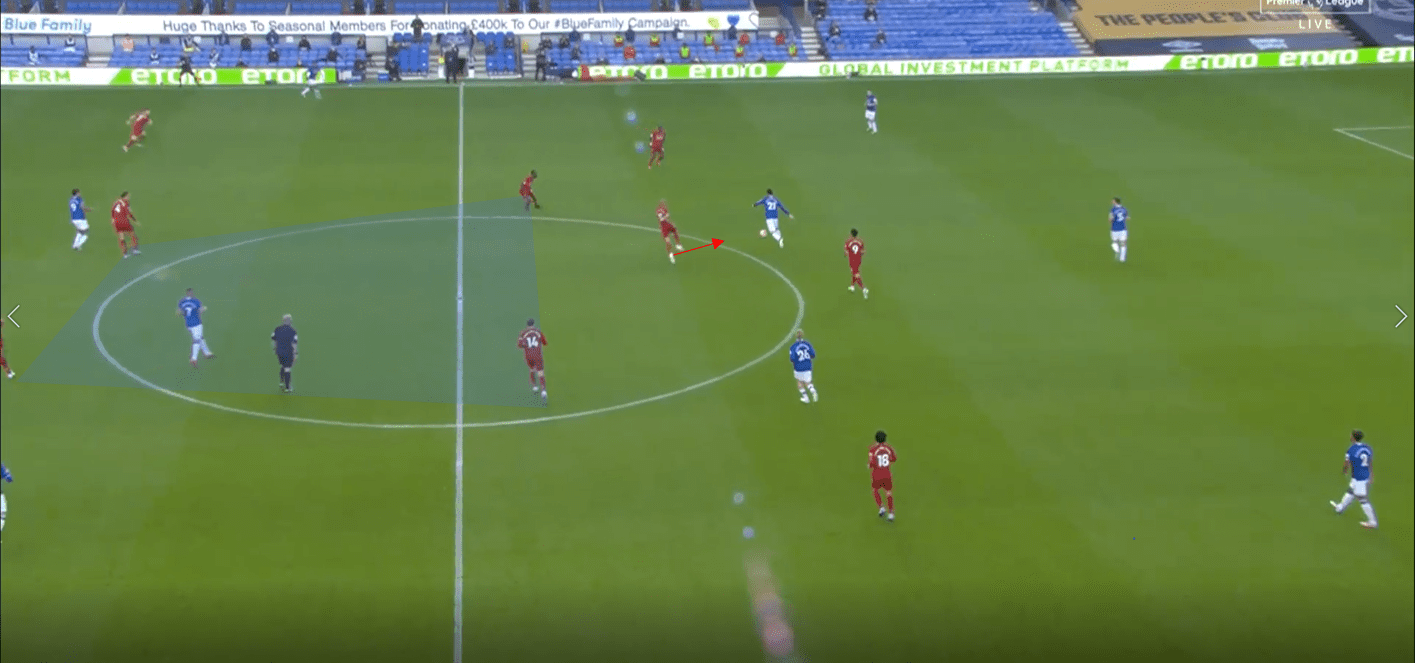
This scene against Napoli again shows the effect Liverpool’s midfield pressing can have on their whole structure.Napoli here following a quick switch to Koulibaly have a ball near pivot surrounded by Firmino, Henderson and Fabinho. The presence of this pivot again impacts on Henderson and Fabinho’s positioning, as Henderson here is just slightly too high and oriented towards this pivot. Napoli really seemed to emphasise width in their play, and their full-backs would push very high and wide to escape coverage by these midfielders. As a result, Trent Alexander Arnold becomes oriented towards this full-back, but Koulibaly plays an extremely intelligent pass over the top to Insigne on the inside. I wouldn’t be surprised to see Everton try similar concepts on Saturday considering Liverpool’s horror show at the back against Aston Villa.
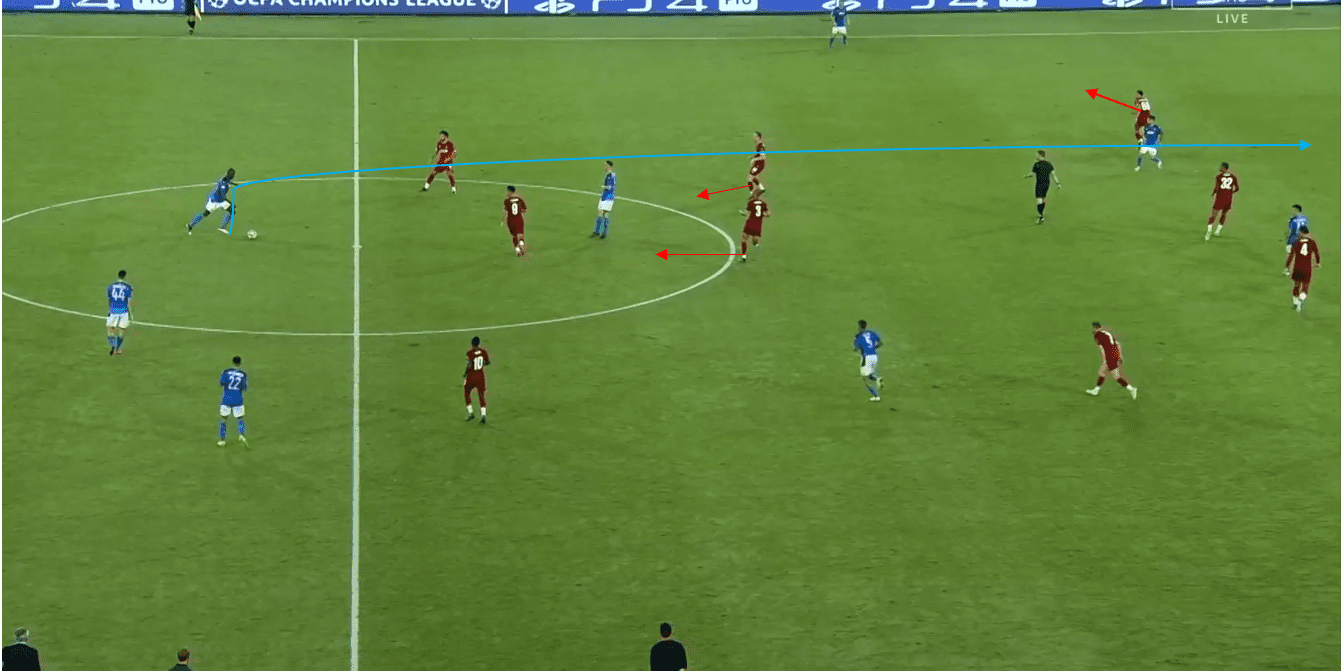
This season Everton have favoured a 4-2-3-1 in possession, and so obviously this gives room for the use of a double pivot. In a similar fashion to Liverpool, Everton’s in possession play is fluid and relies more on principles and roles rather than set positions. Everton will often drop into a back three with one of the central midfielders dropping deep in the half-space, which allows for the wing-back to push higher and wider and stretch the half-space lane. This width doesn’t have to be provided by the wing-back, and we can see here James Rodríguez provides width while Séamus Coleman actually occupies the half-space.
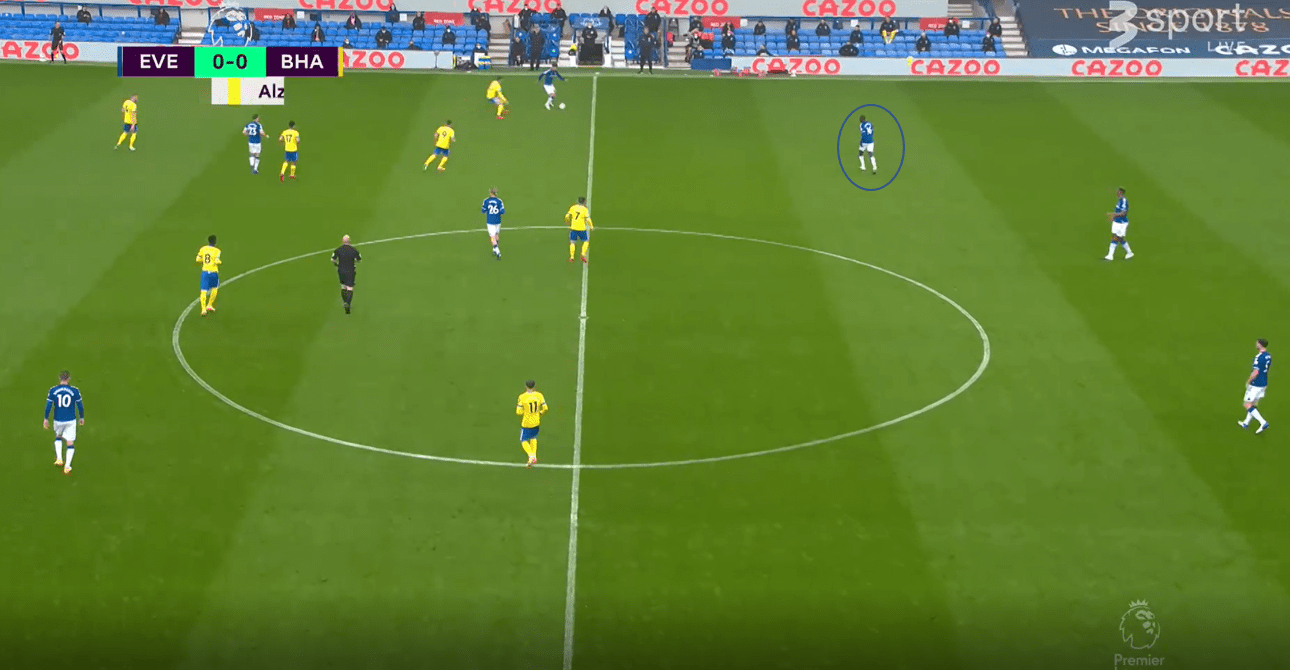
Using goal kicks
A big focus in Everton’s play in that 0-0 draw against Liverpool last season was their use of goal kicks to try and manipulate Liverpool’s structure. Again, this followed the same concept of trying to affect Firmino’s role, and Everton would often push Michael Keane higher to act as a pivot, while Holgate and Pickford would almost acts as the two centre backs. With an extra player now involved, it became easier for Everton to create overloads.
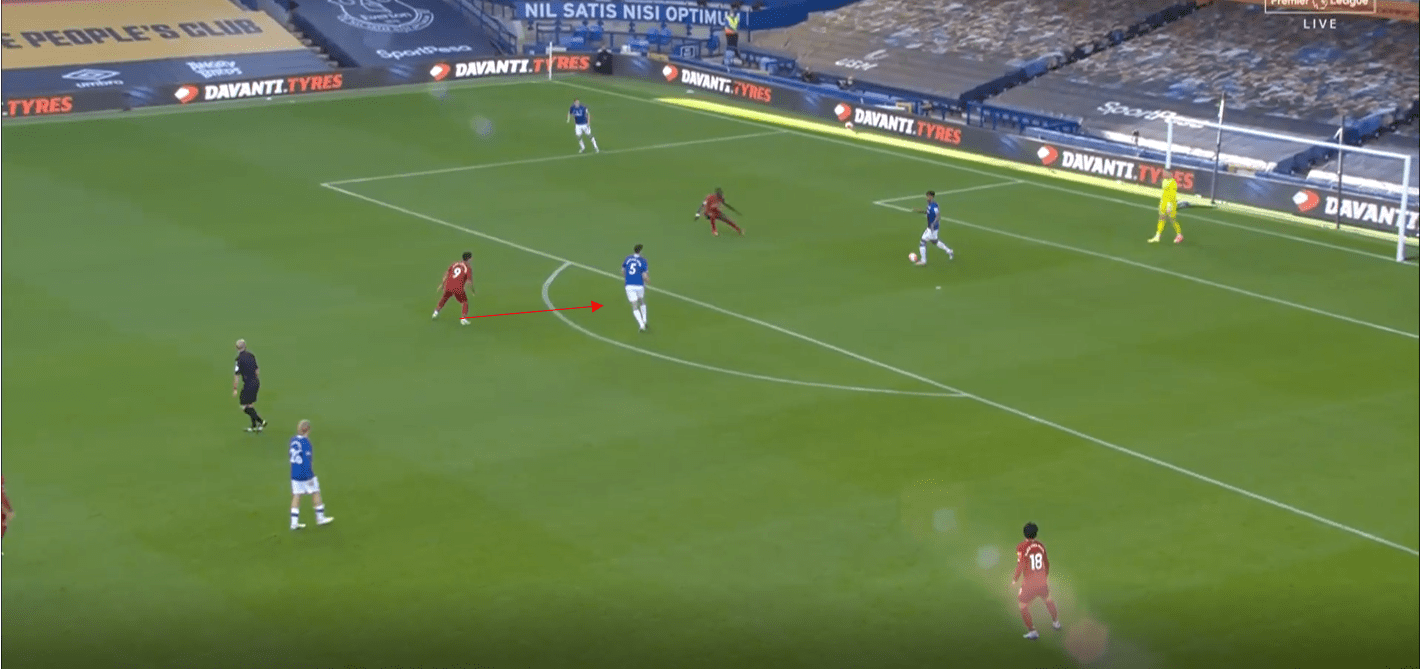
In open play, Firmino could cover one of the double pivots wile a central midfielder would cover the other, but with Firmino now having to mark Keane, Everton are able to create an overload in this area. We can see Firmino here is overloaded, and he gambles here and looks to cut the lane to a pivot to his left. As a result, Keane is now free in a central position.
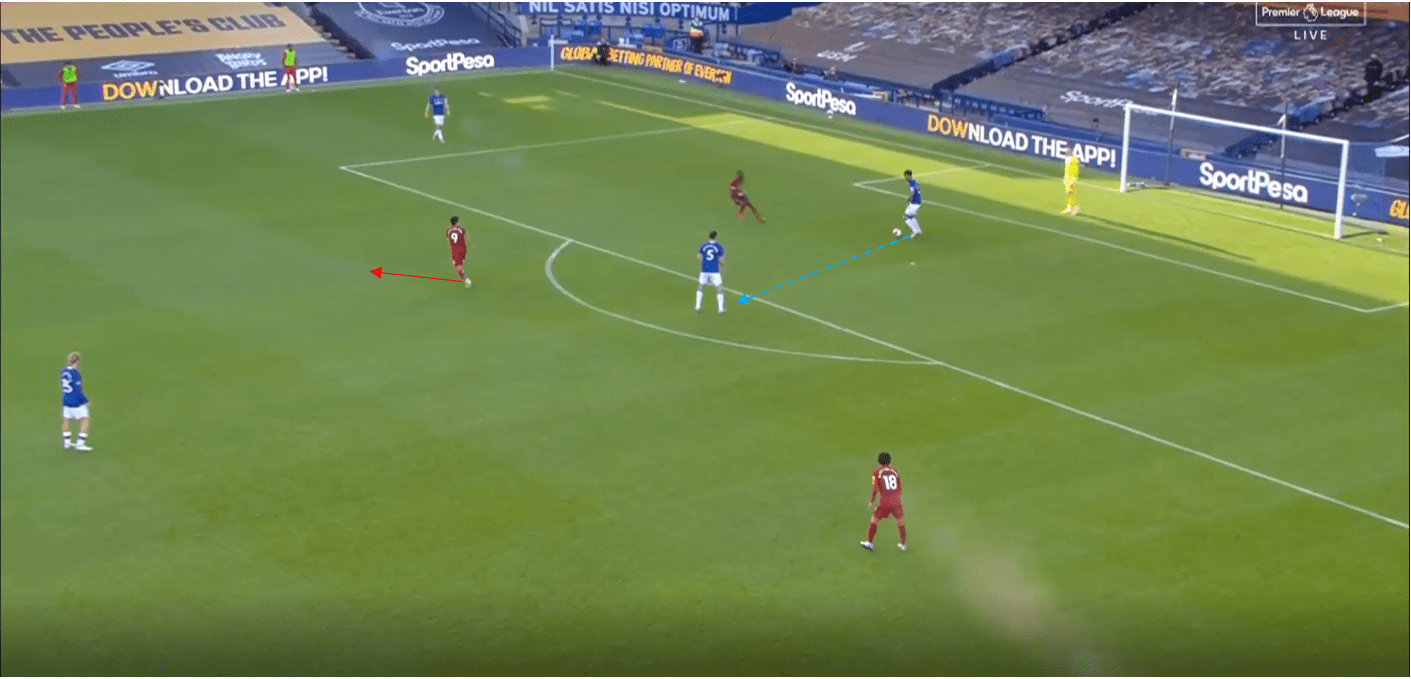
Minamino presses at an angle, but Jordan Henderson is now overloaded, with him having to balance between Tom Davies and Everton’s winger Anthony Gordon dropping into space behind Henderson. This 2v1 allows Everton to progress, and it comes from that staggering in the midfield and the creation of a single pivot with a centre back which creates an almost diamond-like structure in Everton’s midfield.
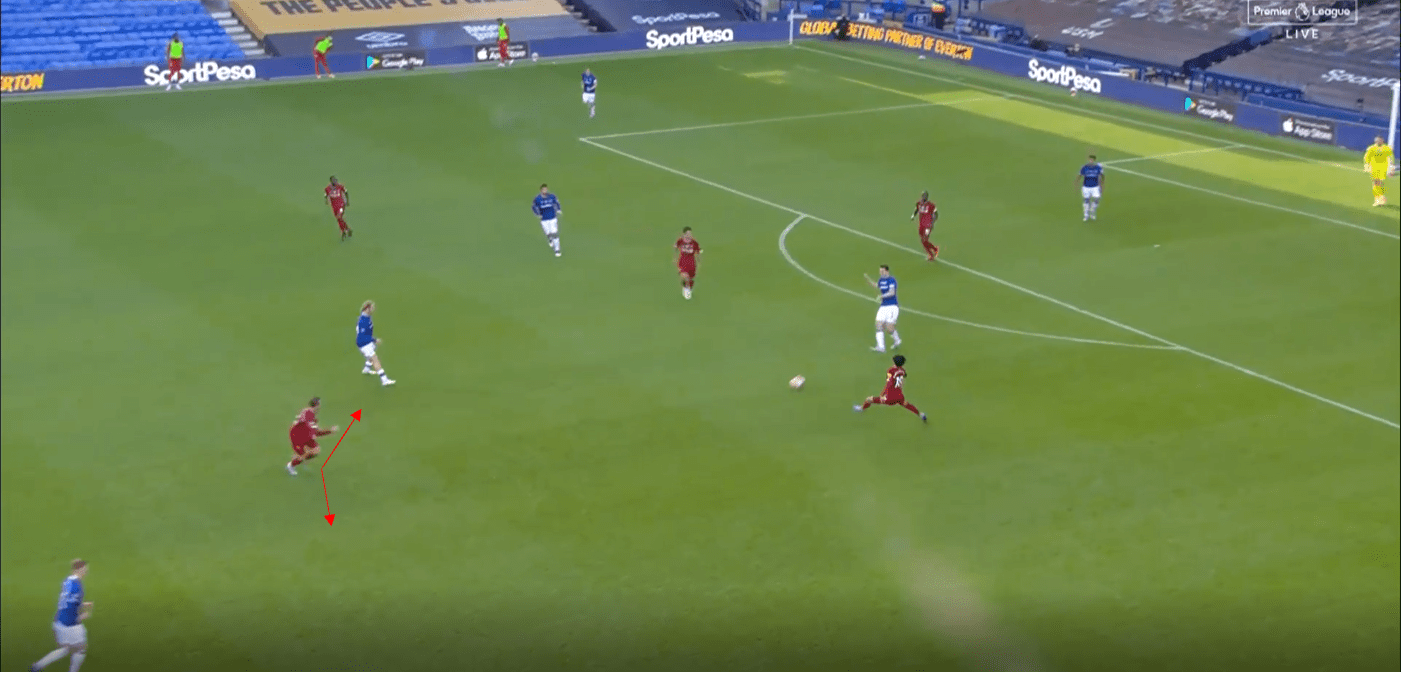
Manchester City used a similar goal kick structure in a Community Shield match, as we can see below. The goalkeeper acts as one of the two centre backs, while John Stones actually pushes up to become a pivot. Firmino’s cover shadow covers Stones, but not the other pivot Rodri who is then free to receive. If Salah covers Rodri, then he is likely to be unable to press the centre back in an effective way. Liverpool opt to operate a high press with a mid-block though, and so are still relatively stable despite the first line being broken.
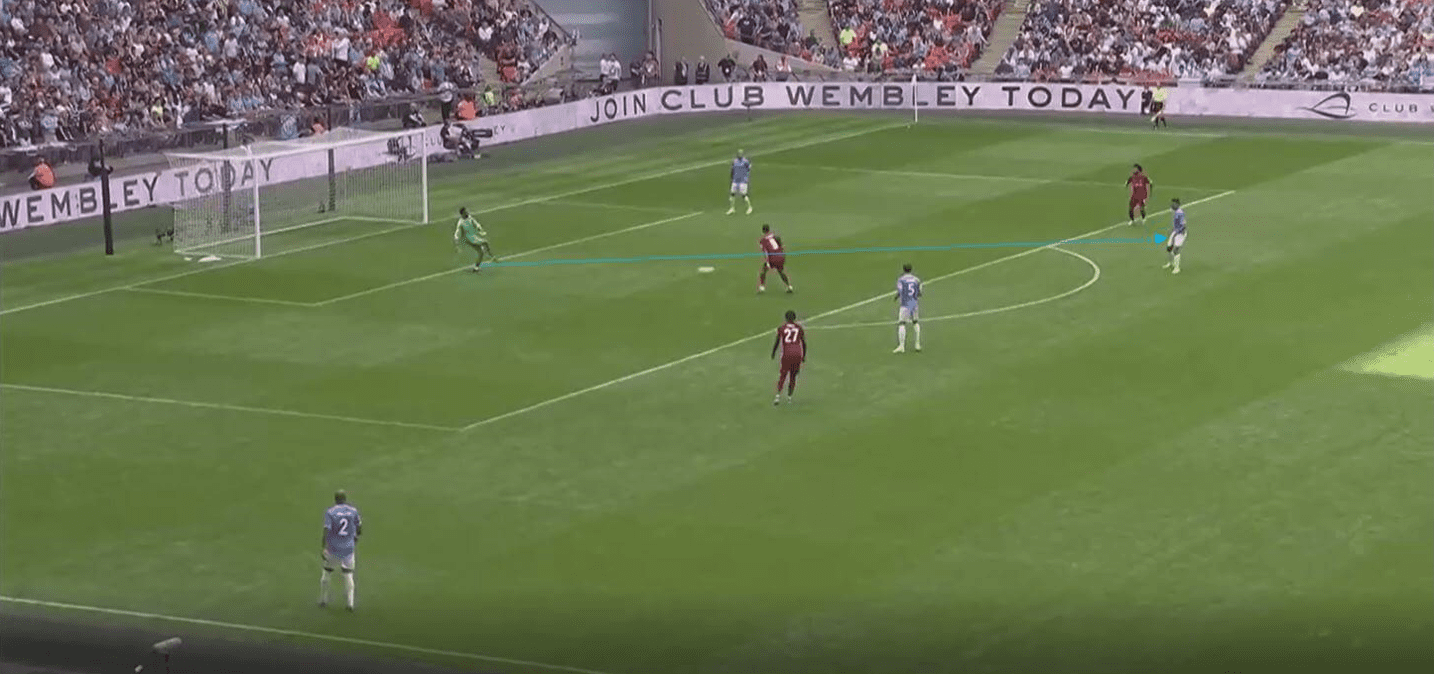
Liverpool’s positional play against Everton’s defensive structure
Everton’s defensive structure so far this season has resembled a 4-2-3-1 that moves into a situational 4-1-4-1 depending on the shape of the opposition. In their previous game against Liverpool, a flatter 4-4-2 was used out of possession, but regardless of shape, I expect Everton to be fairly passive and employ more of a mid-block as opposed to pressing very high.
We can see an example of their 4-2-3-1 pressing below in their most recent game against Brighton, where when faced up against Brighton’s 3-4-3, Everton’s central midfielders would follow Brighton’s central midfielders into deeper areas, creating a 4-1-4-1 shape. Dominic Calvert Lewin was fairly passive in his pressing throughout the game, and Everton instead opted to trigger their press when the ball went to the wide centre backs.
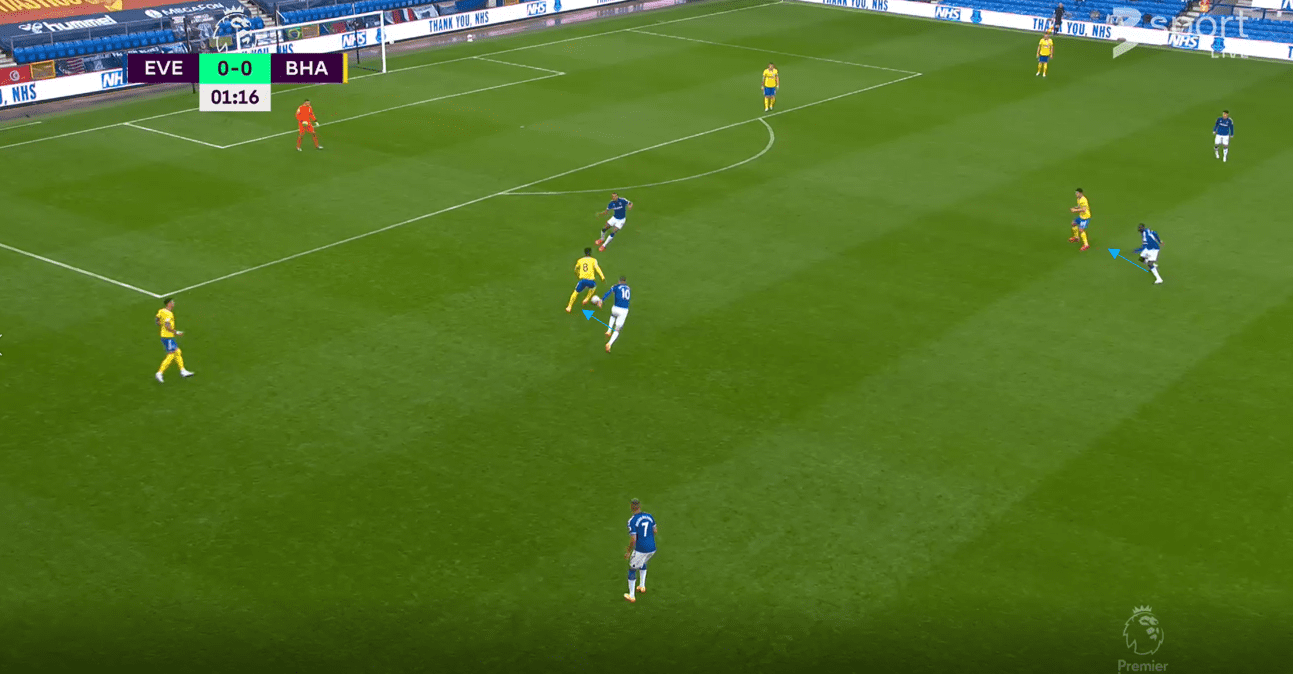
We can see this 4-1-4-1 shape outlined more clearly here, with Tom Davies again hanging back as a deeper midfielder while Abdoulaye Doucouré and Gylfi Sigurðsson press higher against the Brighton centre backs. Richarlison sits much deeper and doesn’t apply pressure.
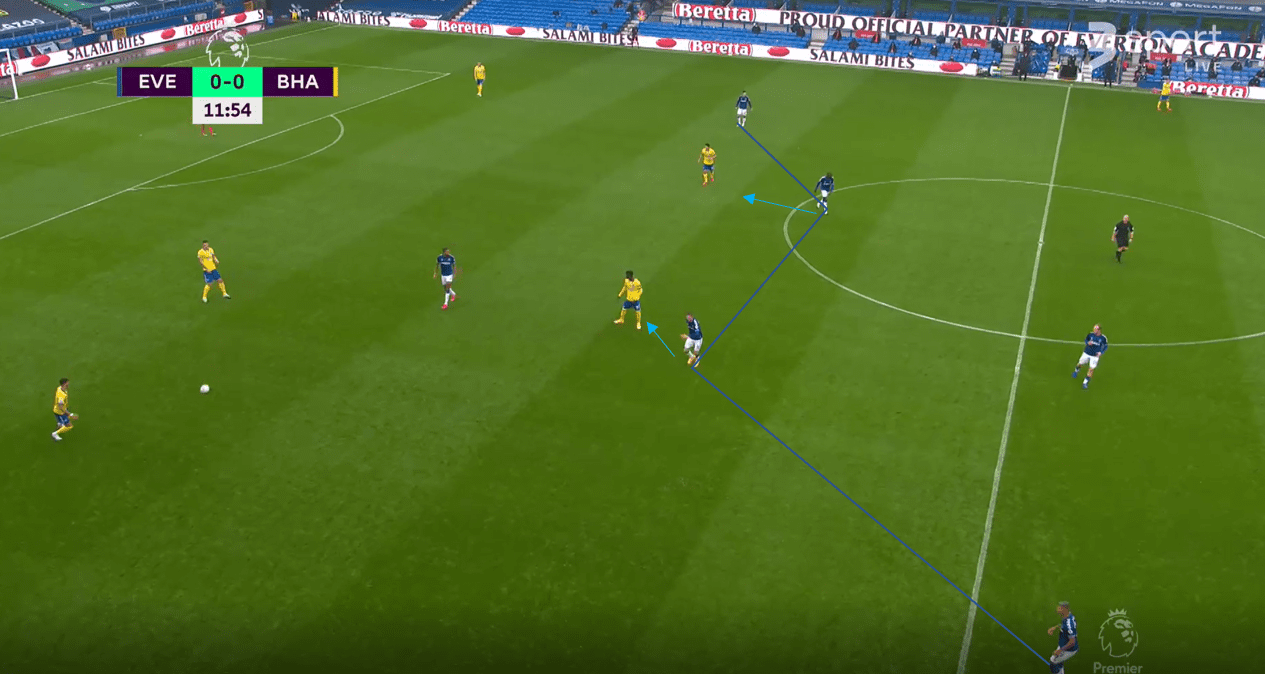
When Brighton switch the ball across then, because Doucouré had to take up a high position in order to press a Brighton midfielder, he concedes space behind him in the half-space, and so this may be something Liverpool look to utilise with Thiago, who is a master at using the depth of his positioning to his and his team’s advantage. James makes no real attempt to stop the pass wide, and so the half-space can be accessed. Liverpool also frequently drop into a back three and so scenes like this could occur.
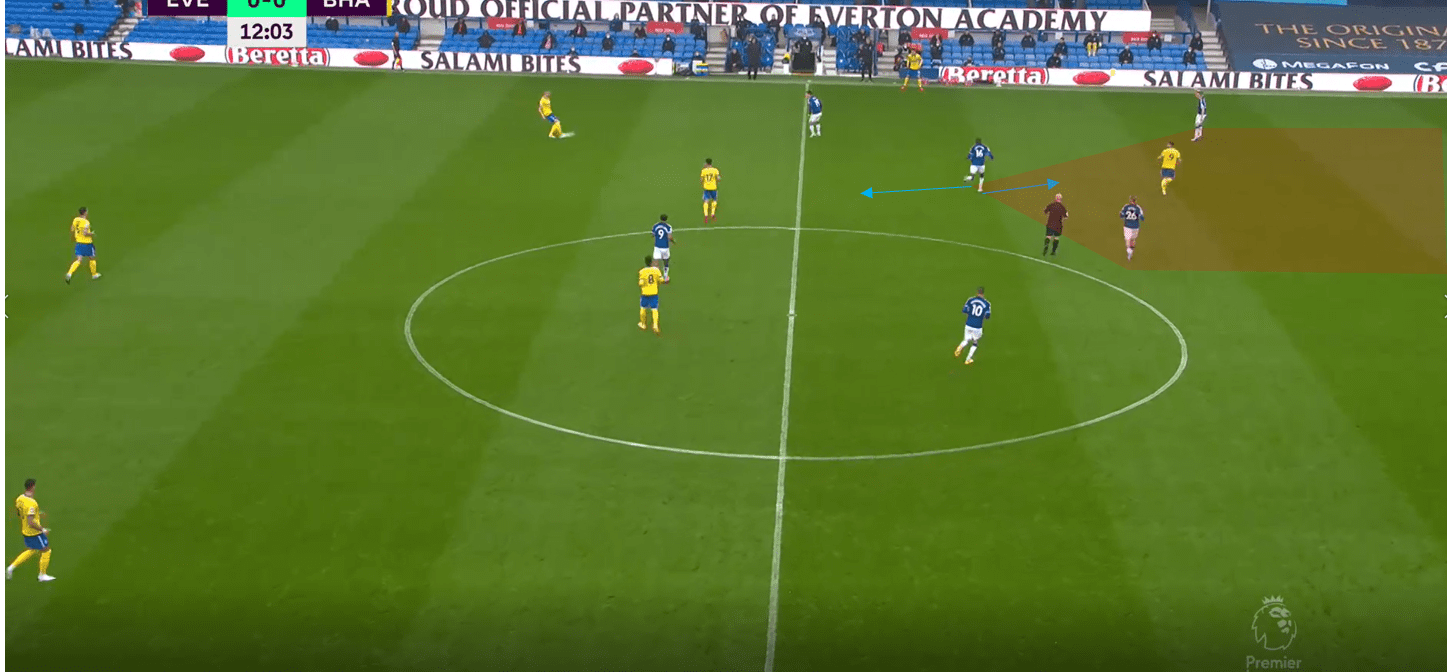
No matter what shape Everton do play, Liverpool’s offensive principles and structure will not change. These principles of their positional play are highlighted below in a diagram I made for a previous piece detailing Liverpool’s structure. The basic foundation of most positional play systems is the use of height, depth and width. Liverpool prioritise occupying the half-space with at least one player, and in order to do this effectively, they need width to occupy defenders and open up these spaces. Without height or centrality in the team, progressing the ball through the half-space can become difficult, and teams who don’t show these principles will often play into the half-space and then get stuck almost. The concept of a plus one in the half-space is also an important one, as it can be difficult to progress while in a 1v1 against a full-back or wide centre back, and therefore having a player overloading to create a 2v1 can aid ball progression.
Liverpool will adjust shape regularly to form a back three with a central midfielder acting deep in the half-space, and this again offers depth to the attack and complements the other principles. Maximum width can be provided by a full-back when a player drops deeper, as they do not have to worry about their out of possession shape. Dropping into a back three can also engage the second line of a press, giving the full-back more time in a wide area and forcing a full-back on full-back press, meaning opposition centre backs are forced into matchups against Liverpool’s tricky inside forwards.
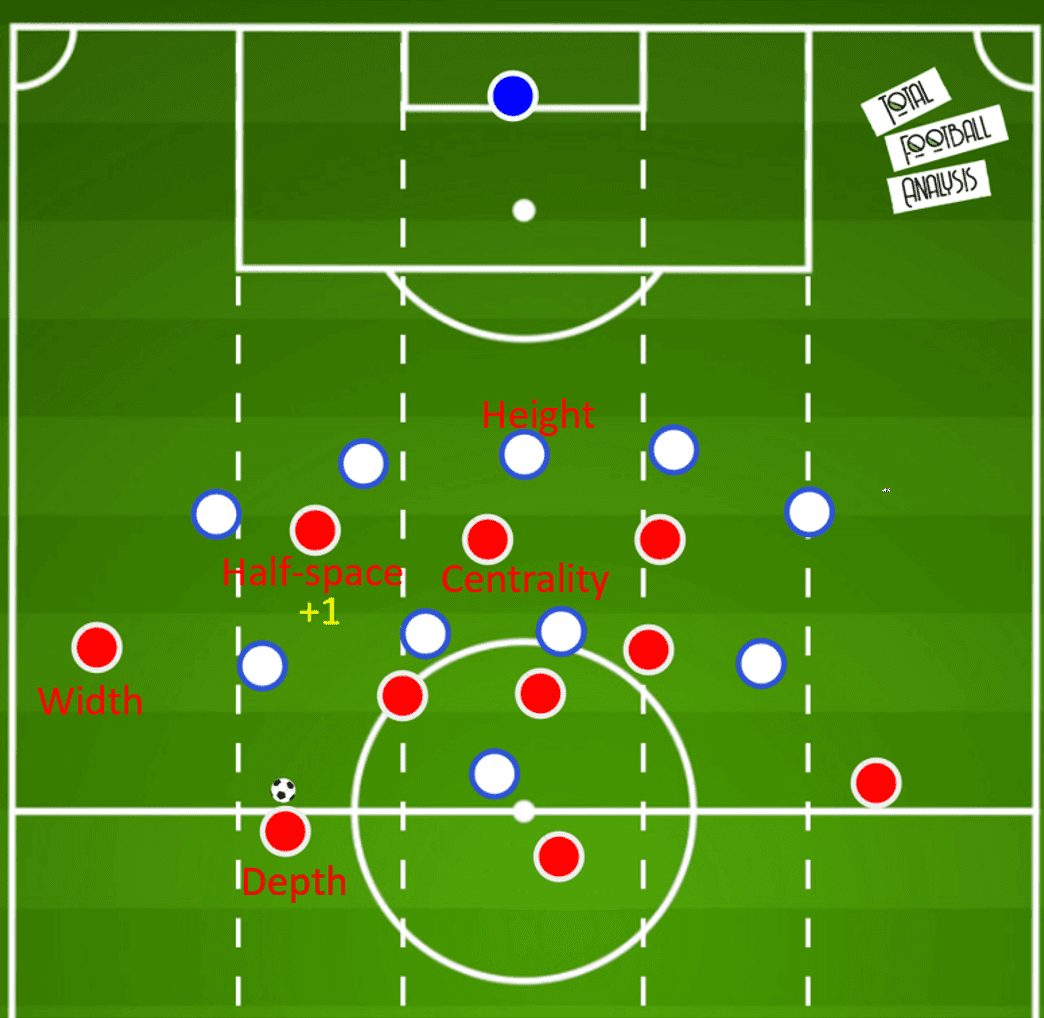
We saw an excellent example of this principle in the build-up to their first goal against Arsenal. Here, Salah pulls wide and provides the width to open up the passing lane to the half-space. Both Naby Keita and Roberto Firmino occupy this area, and so they have both occupation and a plus one in this area. To produce the height now, Firmino runs in behind and receives a pass from Keita. Depth is provided by the central midfielders, and this is helpful in both circulating the ball is needed, and is vital for Liverpool’s defensive stability, with Liverpool’s general rule being to have two central midfielders behind the ball ready to counter-press.
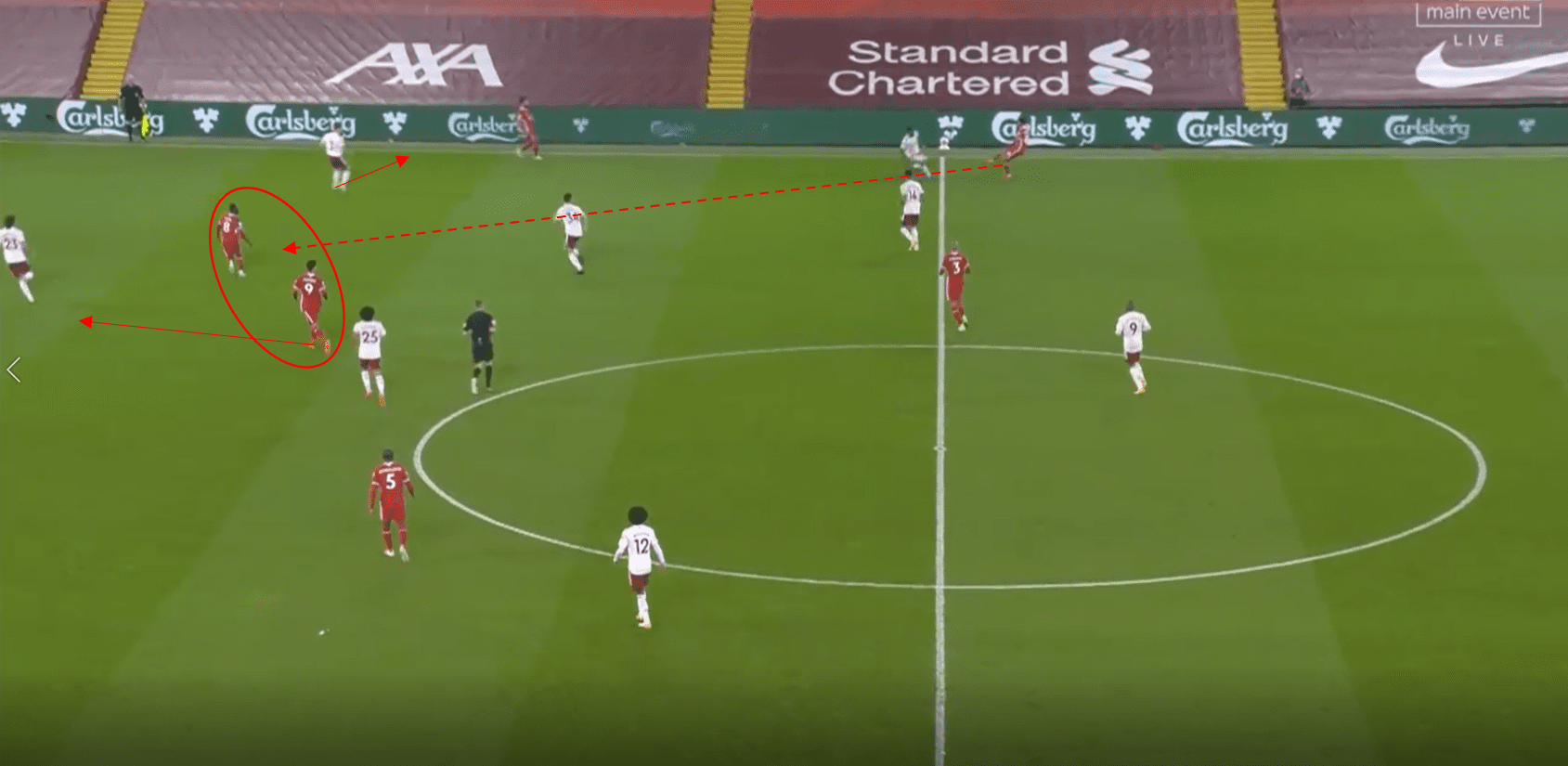
We can see in another example here, Salah occupies the half-space and drags a central defender forward, creating space in behind. Minamino then makes a run from deeper into this space, and Liverpool still have a player in the box to attack a potential cross. Width is provided, Salah occupies the half-space, and Minamino acts as the plus one. Firmino acts as the central player to attack a cross.
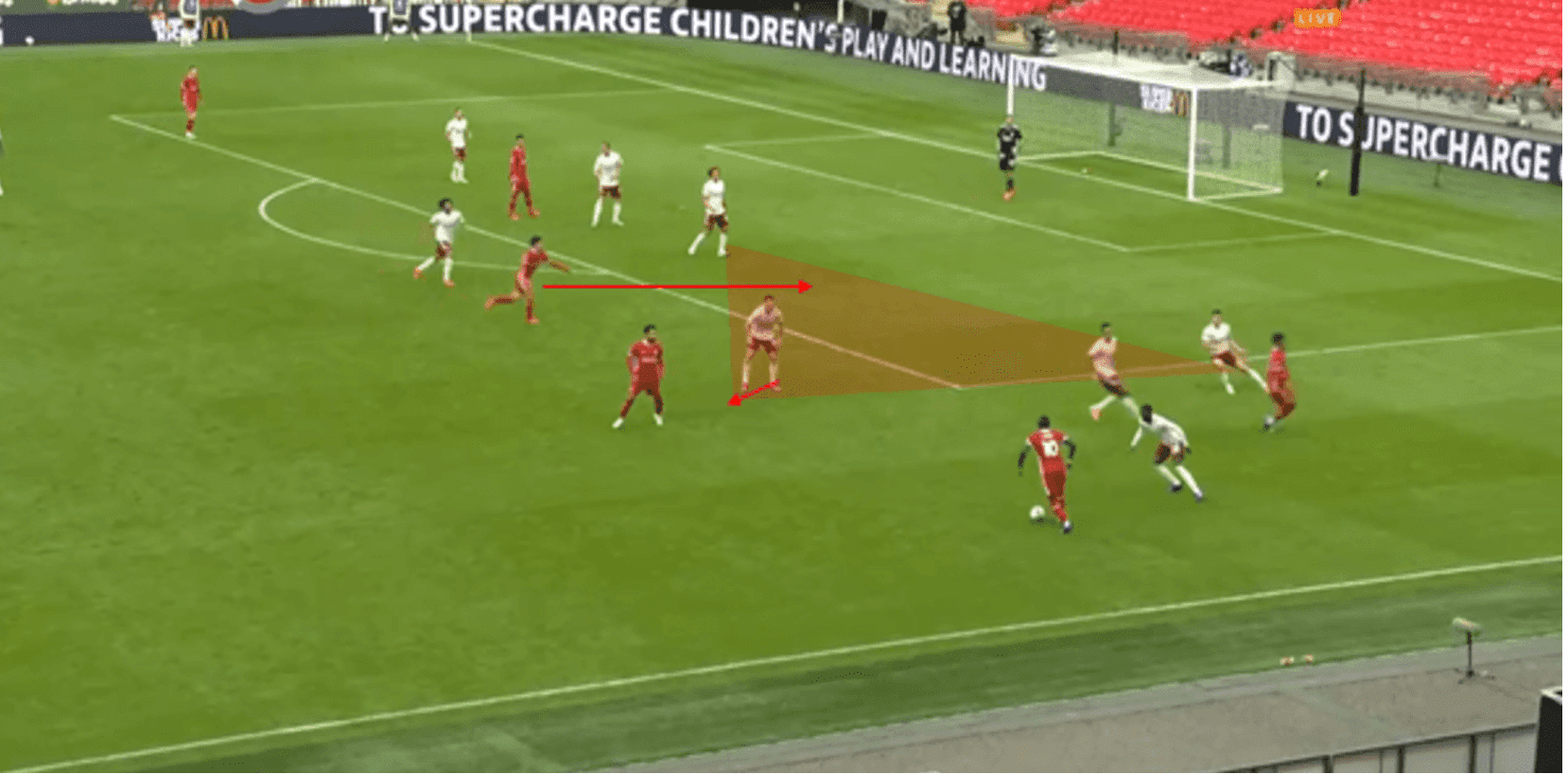
The key for Liverpool is to try and progress through the half-space while maintaining as safe a rest defence as possible, and so Liverpool’s game is all about balance. Their midfield in particular plays a key role, and so it will be interesting to see which midfield Klopp chooses, as they need to strike the right balance of receiving deep to attract Everton pressure, acting as a plus one in the half-space, and being able to counter-press.
Having a midfielder in the half-space is not always possible or optimal, and so Liverpool have to use their other principles in the best possible ways.
We can see in this example here, Liverpool lack that +1 player, as Andy Robertson here plays the ball into Mané in the half-space. Mané receives and looks to play the ball back to Robertson in order to then make a run in behind the centre back marking him. Mané in this scene therefore has to act as the half-space occupier, and the +1 player to provide height. Liverpool can progress the ball like this at times, but Everton will be happy enough to defend in these situations.
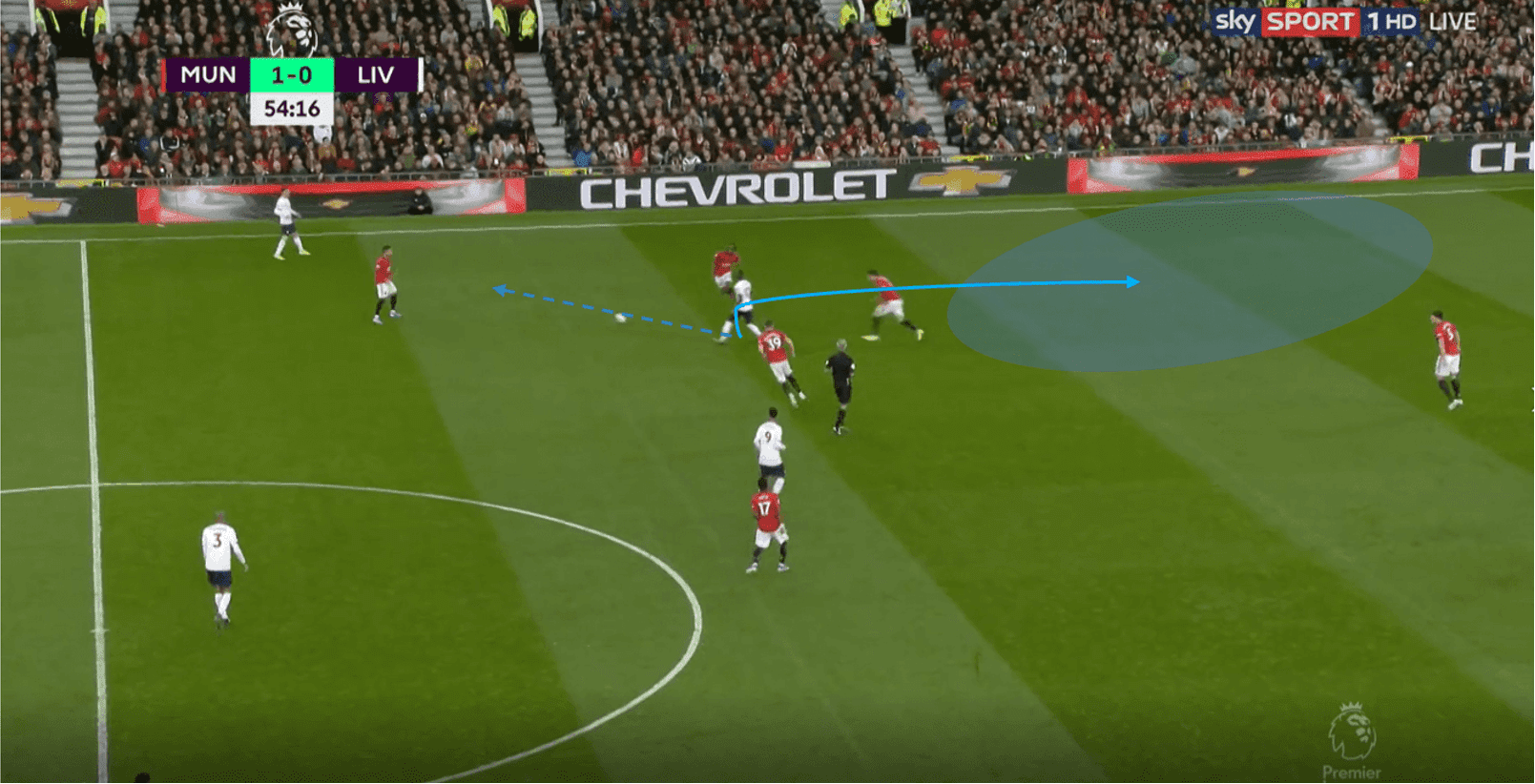
Conclusion
This Merseyside Derby promises to be an interesting game tactically between two excellent coaches, and the position of the two teams in the league gives a fresh new feel about the game. For Liverpool, as is the case in most games, it is about balance and managing risk while looking to play through the opposition. For Everton, they will look to stifle Liverpool’s offensive play and as I’ve mentioned throughout the analysis, they will likely look to play through Liverpool’s high pressure using a double pivot before then potentially looking to get behind that (over) scrutinized high line of Liverpool’s.





Comments